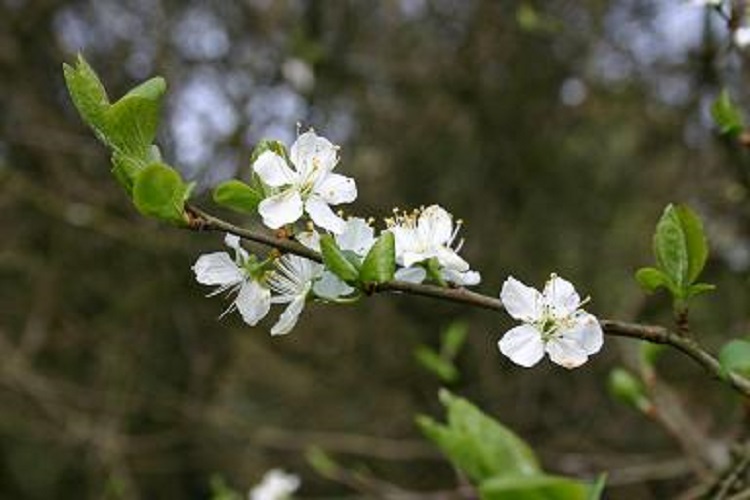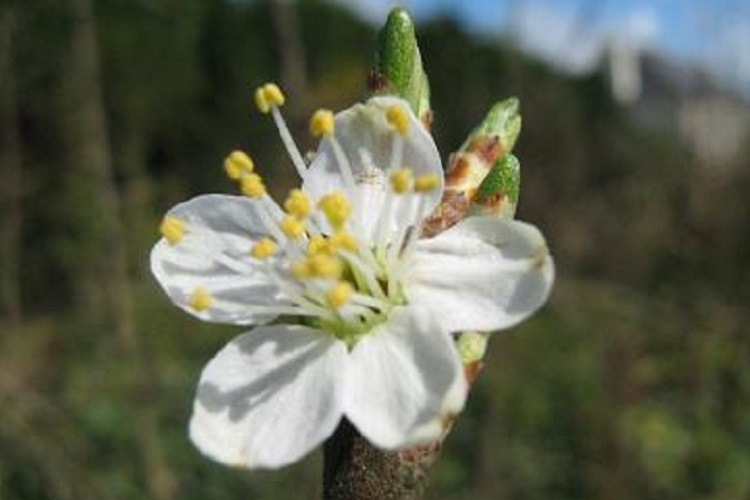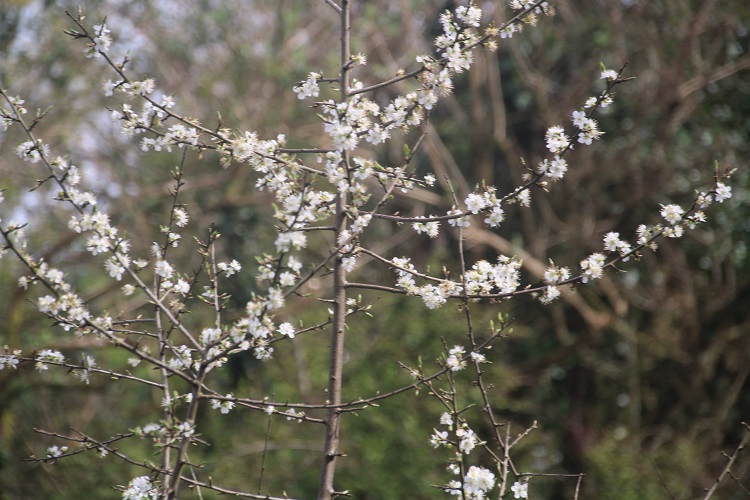 |
 |
 |
| 21st April 2006 | 30th March 2008 | 8th April 2023 |
|
Prunus spinosa (Blackthorn or Sloe) is a common part of hedges locally, and for a long time it grew along the road boundary here, before I cut them out (sounds so painless, doesn't it) and planted the
herbaceous border. I'm sure I am not alone in enjoying the spectacle of its flowers along the hedges in spring. If it could be crossed with a good white or pink flowered
cherry there is great potential for a vigorous, floriferous tree. If it were to be spineless, all the better. As it is, the species (for all its charms) is unwelcome in the garden.
I regularly remove the excess from the front boundary hedge and then spend days removing broken thorns from the inevitable suppurating wounds.
At such times there is little cheer except in noting that it shares with many of the woody Rosaceae an extreme susceptibility to glyphosate. Trees and Shrubs Online tells me that: "The wood of this species is very hard, and prized in rural districts for making hay-rake teeth." Good luck with that! To add insult to injury, it's fruits are used to make sloe gin, the gin that isn't gin. The Woodland Trust informs me that: "Blackthorn was long associated with witchcraft, and it is said that witches' wands and staffs were made using blackthorn wood." |
||